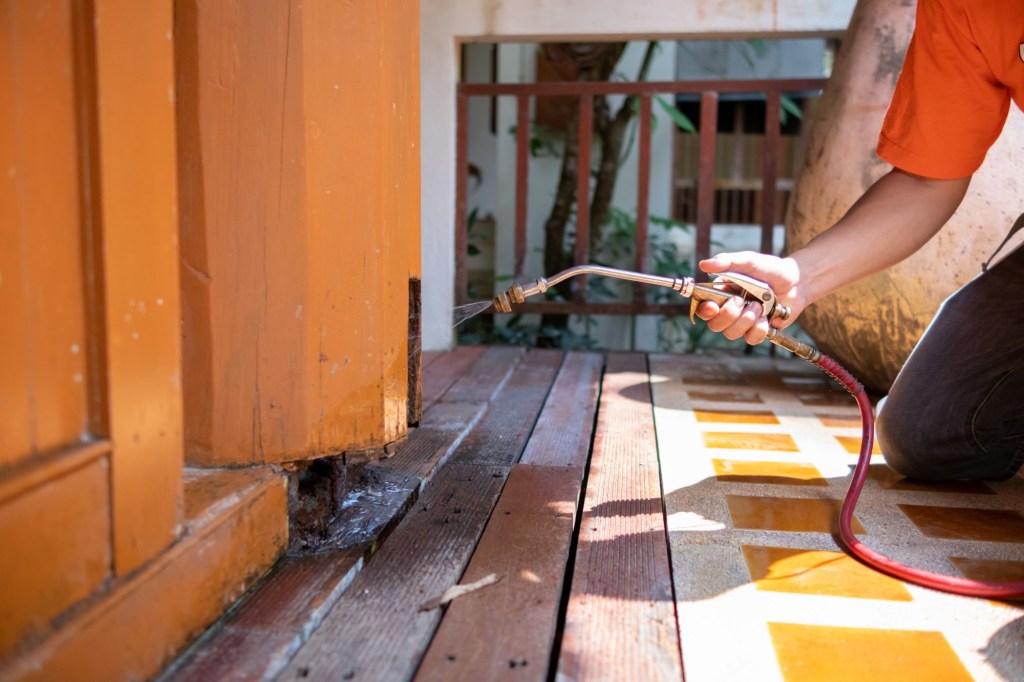
Q: I have a two-story townhome that has termites. I notified the HOA and they were going to send a termite company to treat the infestation. However, before the termite company could do an inspection, the new management company refused to have the termites treated. I was told that the HOA was only responsible for the “common areas,” and I was responsible for everything inside my unit. The problem is these townhomes are attached to other townhomes. You can’t treat one without the other so to speak. Any advice would be appreciated. — J.M., Tustin
Q: In most or all HOAs CC&Rs cover termites on the exterior of the building. But the management company says that they do not cover them inside the unit, they say it is the homeowner’s responsibility to take care of them. My problem is that we get termites in our units because they came in from the exterior of the unit. Can you give us advice on what to do? — B.C., Trabuco Canyon
A: To determine responsibility for termite problems, start with your HOA CC&Rs, which hopefully describe whether the HOA or you are responsible for termite treatment and damage repair.
If the CC&Rs are silent on the issue, Civil Code Section 4780 allocates treatment and repair responsibility differently depending upon the type of HOA involved. In community apartment (also known as “own-your-owns”), stock cooperative, and condominium associations, the HOA is responsible. In planned development associations, the homeowner is responsible.
In townhouse-style planned developments, where homes are attached side-to-side but are not stacked, leaving termite treatment to the individual homeowner is unwise since the entire building probably needs treatment, not just one townhouse.
Many developers of attached planned development homes miss this issue when setting up the original CC&Rs, creating an unreasonable situation for the HOA in which no single homeowner has the right to tent the entire building, but treating only their individual home is generally ineffective to prevent termites. The situation can be corrected with a membership vote to amend the CC&Rs and shift that responsibility to the HOA.
As to residence interiors and furniture, Civil Code Section 4780 only addresses termite damage to common area and so the HOA is not ordinarily responsible for damage to the unit interiors or contents. So, the HOA in that scenario would be responsible for repairing common area damage but the individual homeowner would pay for termite damage to wood cabinetry, furniture, or other interior items.
Check your CC&Rs to confirm the type of HOA in which you own – it will usually state in the first pages which type of common interest development is your HOA. If that doesn’t help, check your deed – if your deed says you own a “unit” and an undivided share of the common area, your home is probably a condominium. If you don’t have a deed but instead receive a share of stock in your HOA, it’s a stock cooperative. If you receive a tenant in common deed stating that you have an undivided fractional interest in the entire property (but do not own a specific residence within that property) your HOA is probably a community apartment. If your deed calls your interest a “lot,” then most likely you own a planned development home. Hoping this helps.
Kelly G. Richardson CCAL is Partner of Richardson Ober LLP, a California law firm known for community association advice. Send potential column questions to Kelly@roattorneys.com.
Richardson, Esq. is a fellow of the College of Community Association Lawyers and partner of Richardson Ober LLP, a California law firm known for community association advice. Submit column questions to kelly@roattorneys.com. Past columns at www.HOAHomefront.com.



